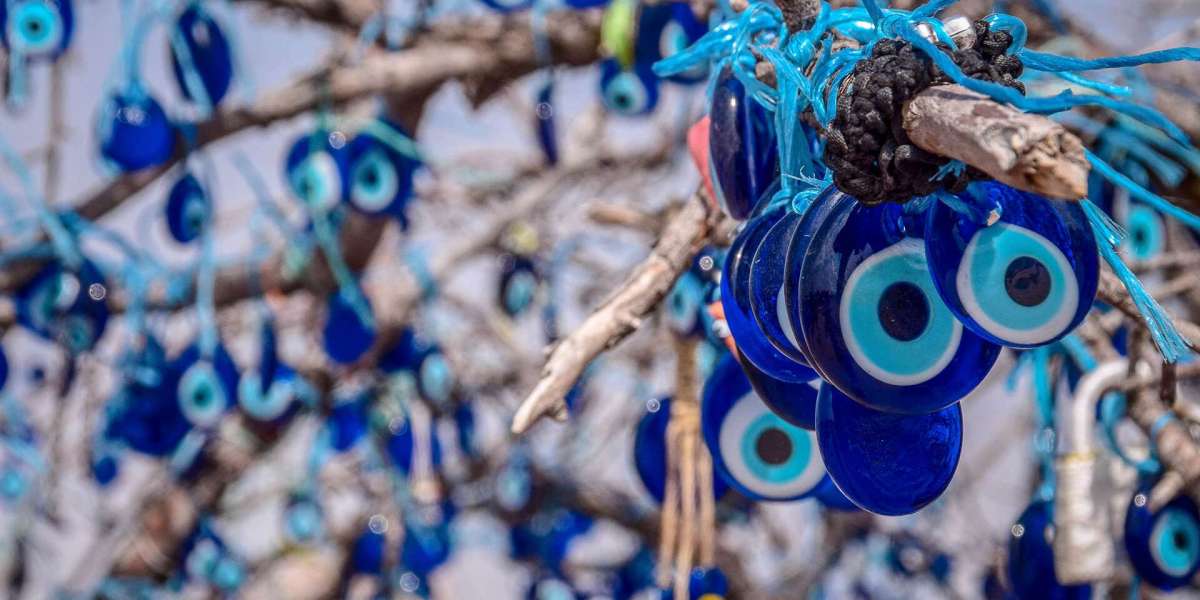Introduction
The Greek Evil Eye, or "Mati" (μάτι), is an ancient and intriguing concept that remains prevalent in contemporary Greek culture. This belief, rooted in the idea that envy and malice can be transmitted through a mere glance, continues to shape various aspects of life in Greece and other cultures. This comprehensive exploration will uncover the history, symbolism, practices, and modern relevance of the Greek Evil Eye, shedding light on its enduring impact.
Defining the Evil Eye
The Evil Eye refers to the belief that envy or malevolence directed towards an individual can cause harm or misfortune. In Greek tradition, this harm is thought to be transmitted through a look or gaze filled with ill intentions. This negative energy can lead to various adverse effects, including health issues, accidents, or general misfortune. While the Evil Eye is a concept found in many cultures, the Greek version has unique characteristics and practices associated with it.
Historical Background
The origins of the Evil Eye can be traced back to ancient Greece and other early civilizations. Ancient Greek texts, such as those by Pliny the Elder, mention the concept, indicating its significance in Greek culture. The belief in the Evil Eye was also present in ancient Rome, Egypt, and Mesopotamia, reflecting its widespread influence. Over centuries, this belief evolved and integrated into various aspects of Greek life, including religion, philosophy, and everyday customs.
Symbolism of the Evil Eye
The Evil Eye is symbolized by a blue eye or bead, known as "Mati" in Greek. This symbol is thought to provide protection against the harmful effects of envy. The blue color is significant because it is believed to repel negative energy. The Mati is often depicted as a round or teardrop-shaped bead with an eye design in its center. Another prominent symbol is the hamsa hand, which features an eye at its center and is used to offer additional protection and good fortune.
How the Evil Eye is Believed to Work
The Evil Eye operates through the concept of negative energy transfer. When someone harbors feelings of jealousy or malice, they may unintentionally direct this negative energy toward another person through their gaze. The strength of the Evil Eye's impact is thought to depend on the intensity of the negative feelings behind the gaze. This energy can lead to various negative effects, such as physical ailments, emotional distress, or other forms of misfortune.
Protection Methods
Protection from the Evil Eye is a central aspect of Greek tradition. One of the most common methods is the use of protective amulets, such as the blue Mati. These amulets are often worn as jewelry or displayed in homes, businesses, and vehicles. The Mati is believed to absorb or deflect the negative energy associated with the Greek Evil Eye. In addition to amulets, traditional rituals and prayers are performed to cleanse individuals of any Evil Eye influence. These rituals may include the use of special oils and recitations of protective prayers.
Types of Evil Eye Amulets
Several types of Evil Eye amulets are used in Greek culture, each with its unique significance and design. The blue Mati is the most widely recognized amulet, often worn as a necklace, bracelet, or keychain. It is also commonly displayed in homes and vehicles. The Mati is designed to be clearly visible to ward off negative energy. The hamsa hand is another popular amulet that often incorporates the Mati within its design. The hamsa is believed to offer enhanced protection and bring good fortune.
Proper Use of Amulets
For an Evil Eye amulet to be effective, it should be used appropriately. The Mati should be worn or displayed in a visible location, as its presence is believed to offer protection. In homes, the amulet is typically hung near the entrance to prevent the Evil Eye from entering. In vehicles, it is often attached to the rearview mirror to provide protection while traveling. Regular cleaning and maintenance of the amulet are also recommended to ensure its continued effectiveness.
Evil Eye in Greek Mythology
Greek mythology includes various stories that reflect the concept of the Evil Eye. One notable figure is Medusa, whose gaze had the power to turn people into stone. Although Medusa's story is not a direct representation of the Evil Eye, it highlights the potent and dangerous nature of a powerful gaze. Myths involving gods and their ability to curse individuals through their eyes further emphasize the significance of the Evil Eye in ancient Greek beliefs.
Superstitions and Cultural Practices
In Greek culture, numerous superstitions and practices are associated with the Evil Eye. For example, when someone receives a compliment or experiences good fortune, it is common to spit three times to ward off the Evil Eye. This practice is believed to prevent the envious gaze from causing harm. Another tradition involves reciting a specific prayer known as "Xematiasma" to cleanse oneself of any negative influence. These superstitions and practices reflect the ongoing importance of the Evil Eye in daily Greek life.
The Evil Eye in Modern Greece
The belief in the Evil Eye remains strong in contemporary Greece. Many people continue to use amulets, perform rituals, and observe superstitions to protect themselves from the Evil Eye's effects. The Mati is commonly seen in various settings, including homes, businesses, and vehicles, symbolizing its continued cultural relevance. The persistence of the Evil Eye in modern Greece highlights its deep-rooted significance and the ways in which traditional beliefs continue to shape contemporary practices.
Comparative Analysis: The Evil Eye Across Cultures
The belief in the Evil Eye is not unique to Greek culture; it is present in various forms around the world. In Turkey, the "Nazar" is a popular amulet used to protect against the Evil Eye. The Nazar often features a blue eye design similar to the Mati. In Italy, the "Malocchio" is a traditional belief involving protective symbols and rituals. Each culture has its unique interpretations and practices related to the Evil Eye, but the common theme of protection against envy remains consistent across different societies.
Scientific Perspectives on the Evil Eye
While the Evil Eye is rooted in cultural beliefs, some scientific perspectives offer explanations for its effects. The "nocebo effect" is a psychological phenomenon where negative expectations can lead to real physical symptoms. This effect may explain why individuals who believe they have been affected by the Evil Eye might experience symptoms attributed to it. Additionally, research into cultural beliefs and their impact on individuals' perceptions provides insight into how the Evil Eye is understood and experienced in various contexts.
Addressing Common Myths and Misconceptions
Several myths and misconceptions surround the Evil Eye. One common myth is that only specific individuals possess the power to cast the Evil Eye. In reality, the belief is more about the collective impact of envy and malice rather than individual capabilities. Another misconception is that the Evil Eye only affects those who believe in it. However, the concept of the Evil Eye is a cultural phenomenon that can influence people regardless of their personal beliefs. Understanding these myths and separating fact from superstition can help individuals approach the belief in a more informed manner.








